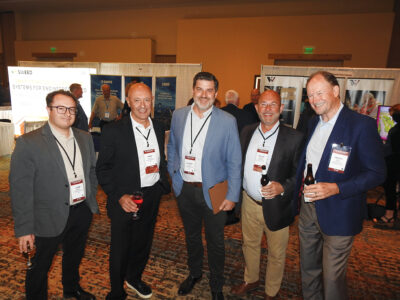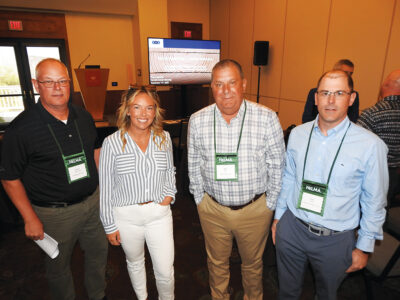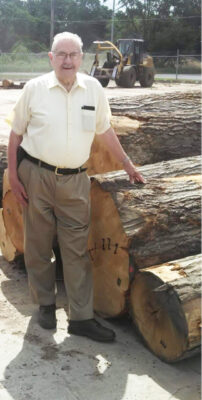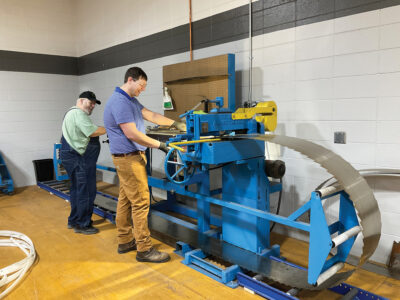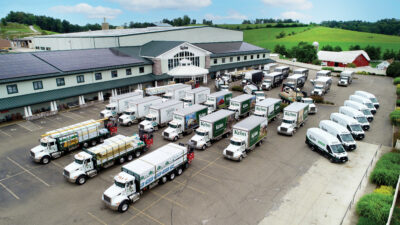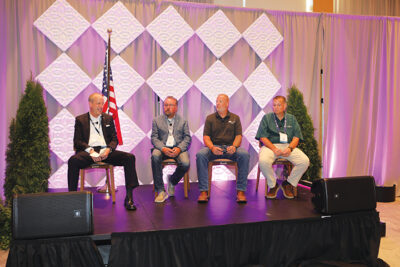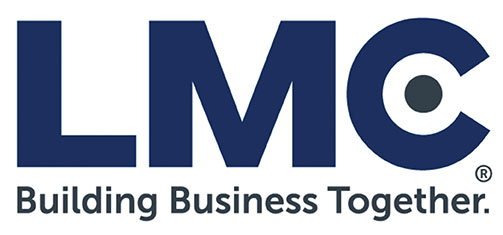
Founded in 1935, LMC has grown to become the longest standing, leading forest products and building materials buying group in the United States. Representing over 430 members with more than 1,800 locations across all 50 states, LMC is a cornerstone of strength and collaboration in the industry.
At its heart, LMC is a network of independent, family-owned businesses deeply rooted in their communities. These businesses unite under the LMC banner to collaborate, share best practices, and forge relationships that enhance their operations and contribute to the industry’s advancement. For 90 years, LMC has maintained enduring partnerships with premier lumber mills and top manufacturers, solidifying its reputation for quality and excellence.
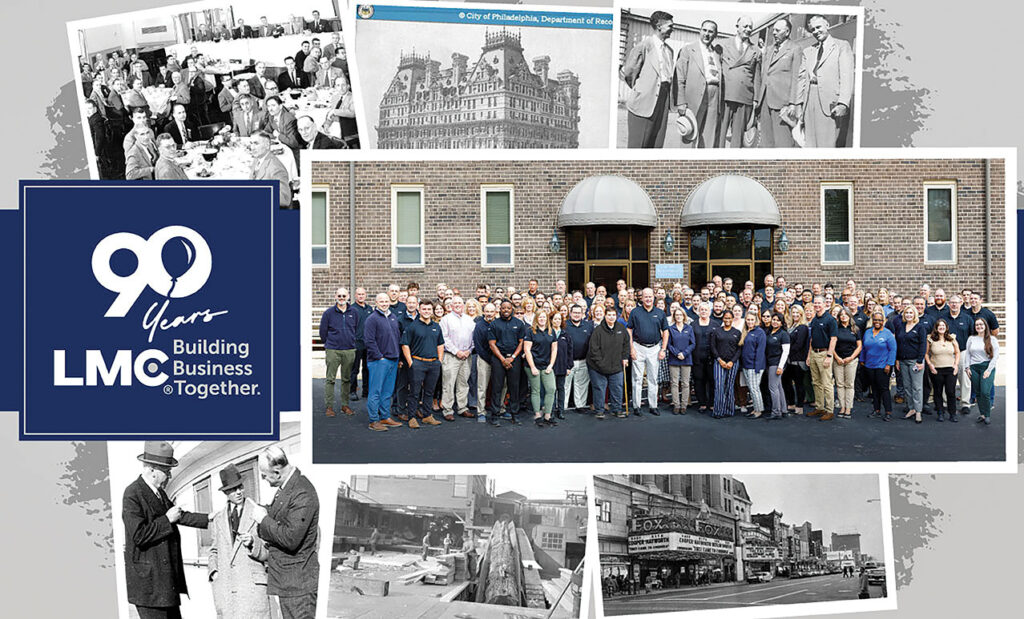
A Legacy of Vision and Resilience: LMC’s Inception
In the midst of The Great Depression, James L. Buckley, who managed the Middle Atlantic Lumbermen’s Association (MALA), was intrigued by the cooperative business model used by The Associated Merchandising Corporation of New York City. Familiar with many independent lumber dealers, Buckley pitched the concept of combined purchases to a group of dealers in the Mid-Atlantic states.
In 1935, 35 lumberyards joined forces and founded LMC with Buckley appointed as the first General Manager, and two other employees. LMC held its First Annual Meeting for Stockholders in January 1936 in Philadelphia. Dividend checks were distributed to each Stockholder and ranged from a few hundred dollars to well over a thousand. Thirty-five new Stockholders joined that year from New York and New England, bringing the total membership to 70. After one year of operations, purchases reached $536,000, or the equivalent of over $12 million today.
Working together, Buckley and the stockholders developed programs, negotiated buying opportunities, and established direct relationships with lumber mills who were previously only selling to the traditional wholesale community. Through their foresight and vision, they changed the way business was conducted in the lumber industry with practices that continue to this day.
LMC’s Pivotal Role in World War II
In 1942, building materials were scarce, as products were used to support the war effort. When the Army Corps of Engineers couldn’t secure enough lumber, LMC became the distribution arm for Georgia Hardwood to service the war effort. It was fundamental to the growth of LMC, keeping businesses intact, establishing a community presence, and creating a future inventory of hard-to-get lumber.
LMC’s partnership with Georgia Hardwood during WWII led to Buckley transitioning from General Manager of LMC to Vice President of Eastern Division at Georgia Hardwood Lumber.
Having two qualified candidates to fill the position, the job was split into two with Reece Hatchitt and Frank Simmons both stepping in to fill the role in 1944.
In 1945, the LMC Board of directors authorized a modest advertising and direct mail program designed to promote the company as an outlet for lumber yard products throughout the east. A new ELMCO Trademark was created to identify only the highest quality ELMCO products.
Post WWII Boom
After two years, Reece Hatchitt and Frank Simmons resigned and Marvin Johnston, who had been Eastern sales manager for Long-Bell Lumber in Washington, D.C., became General Manager in 1946.
In 1955, LMC replaced the General Manager position upon the hiring of Robert Fraunberger as President. Fraunberger organized LMC on a divisional basis with corporate officers in charge of several departments. His administration was characterized by further expansion, south to Florida and west to Mississippi. At that time, there were 56 LMC dealers.
In 1960, LMC celebrated its 25th Anniversary at the Shoreham Hotel in Washington, D.C. on November 9th. LMC updated the ELMCO Logo for use on private label products, letterheads, envelopes, and business cards.
1970 to the Turn of the Century
New President & CEO, Edward “Ted” Magarian assumed the helm after Fraunberger retired in 1974. Magarian led the move to give LMC official cooperative status, thus substantially increasing annual dividends to Stockholders. Magarian felt that it was important for LMC to take on more Stockholders who met the requirements, and some 30 new dealers joined the company during his brief tenure.
LMC turned forty the following year with 120 stockholders across the east coast and as far west as Mississippi with purchases crossing the $100 million mark for the first time. Two years later, William H. Van Lanen accepted the position of President after Magarian retired. Van Lanen initiated new management techniques and organizational changes to strengthen LMC and develop better controls. Officers were assigned broader responsibility and accountability. Business plans were developed by the department after consultation with dealers and suppliers.
Committee duties were expanded, and prominent speakers were invited to shows, increasing attendance.
Lumber dealers saw the value and the number of LMC stockholders continued to increase in the coming decades.
The 70s and 80s brought further expansion into the Southeast and Midwest, and parts of Texas and Minnesota – shifting LMC’s service area across the Mississippi river. In 1985, LMC celebrated the half century mark. In 50 years, the company experienced significant growth in both membership and dealer purchases with the stockholder count reaching 200. In 1988, LMC reached a milestone with its first billion dollars with 262 stockholder companies.
Van Lanen retired in 1991, and Anthony DeCarlo was appointed as the new President & CEO. Under DeCarlo’s leadership, west coast expansion and sole affiliation became a reality.
Purchases broke records reaching as high as $1.5 billion.
In 1997, LMC opened up the Rockies as a new Western Region and surpassed 300 stockholders. One year later, LMC joined the modern era by launching its website: lmc.net.
Before the turn of the century in 1999, LMC achieved another milestone by surpassing $2 billion in purchases for the first time with 328 stockholder companies.

